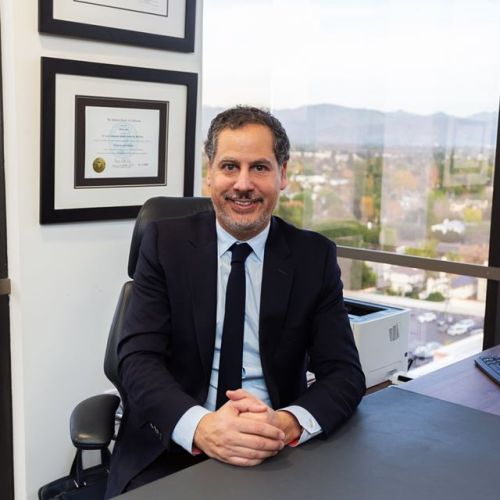Planning for Your New Family: What LGBTQ Couples Need to Know

Life moves fast, especially here in California. The past decade has brought an incredible amount of progress. We’re lucky to live in times where LGBTQ couples have access to the services they need to plan for the future and have happy, healthy families. While a fertility center has always been the place for couples or individuals looking for assistance starting a family, there have never been more resources available for people in the LGBTQ community looking to have children. That’s why it’s important to get the facts when beginning the planning stages of starting your family. There are many services available and it can be overwhelming getting all of the information sorted. Because this should be the happiest time of your life, we want to make the process as easy as possible for you.
There are a variety of options available to you depending on your individual situation. Obviously, everyone will have different needs or preferences for how they go about the process. Of course, no matter what solutions or treatments interest you, ultimately you’ll want to speak with your doctor. Only your doctor can set you on the right course of treatment that will help you achieve your goals while also keeping you healthy. Here is some of the general information on fertility treatments LGBTQ couples or individuals should have so they can make an informed decision.
In Vitro Fertilization
Ultimately, no matter which procedural path you end up taking, you’ll likely end up at a point where in vitro fertilization will come into play. IVF is the most common form of assisted reproductive technology. It is more or less the cornerstone of family planning for LGBTQ couples, whether a female parent chooses to carry the child or a gestational surrogate is used. Technically, the entire procedure is a combination of IVF and embryo transfer. This is a two part procedure.
First, a woman’s ovaries are stimulated via hormones which will cause several eggs to grow over the period of about a week. Once it is determined that the eggs are mature, they will be removed with a minor surgical procedure that will require twilight anesthesia. Eggs are then fertilized in a laboratory setting with sperm provided by the patient’s partner or with sperm taken from a donor. Secondly, after satisfactory incubation, the embryo is then transferred into the patient or gestational surrogate to carry to term. IVF is a leading procedure for both LGBTQ couples and for women who have difficulty with their pregnancies because the procedure avoids many of the processes of a pregnancy where something may difficulties may be encountered.
Gestational surrogate
There are obviously several scenarios where a gestational surrogate would be used. Clearly, if two men are looking to have a child, a female third party would need to come into play. Other reasons include a woman not being able to have a child for any reason or, simply, a surrogate is preferred. To circle back to IVF for a moment, it’s important to point out that the gestational surrogate will have no biological “bond” with the child because both sperm and egg will come from some combination of the parents and/or a donor. For emotional and legal reasons, this is important. The IVF-ET process is completed and the surrogate has the baby for the intended parents.
Egg Donation
Egg donation may be part of the process. It certainly will be if a male couple is looking to have a biological child. Of course, a female couple may also go through this process if both women have complicating factors that would make natural pregnancy difficult. Egg donation can be used in combination with a gestational surrogate depending on your individual situation. The process will be completed via IVF-ET.
Egg donation has high success rates. Compared to other assisted reproductive technology treatments, egg donation has typically higher conception and live birth rates. Egg donors are carefully screened with a variety of exams to ensure the greatest chance of having a healthy child.
Other concerns
The process can take some time from beginning to end, and we don’t just mean waiting the nine months! There is a deep emotional investment in seeking out assistance when trying to start a family. That’s why no matter the situation, we are dedicated to providing you with the utmost care so that you end up with the most important thing: a happy and healthy family.
Conclusion
California Center for Reproductive Health is the fertility clinic in Southern California that will meet all your needs while treating you with friendly professionalism while in our care. If you and your spouse or partner are ready to begin a family, we encourage you to contact us today. Whether you have questions, concerns, or you’re ready to set up a consultation, we’re available. Dr. Eliran Mor and team are here to help you every step of the way.
Eliran Mor, MD
Reproductive Endocrinologist located in Encino, Santa Monica, Valencia & West Hollywood, CA
FAQ
What does a reproductive endocrinologist and infertility specialist do?
Reproductive endocrinology and Infertility is a sub-specialty of Obstetrics and Gynecology. In addition to managing medical and surgical treatment of disorders of the female reproductive tract, reproductive endocrinologist and infertility (REI) specialists undergo additional years of training to provide fertility treatments using assisted reproductive technology (ART) such as in vitro fertilization.
Reproductive endocrinologists receive board certification by the American Board of Obstetrics and Gynecology in both Obstetrics and Gynecology and Reproductive Endocrinology and Infertility.
When should I see an REI specialist?
In general, patients should consider consulting with an REI specialist after one year of trying unsuccessfully to achieve pregnancy. The chance of conceiving every month is around 20%, therefore after a full year of trying approximately 15% of couples will still not have achieved a pregnancy.
However, if a woman is over the age of 35 it would be reasonable to see a fertility specialist earlier, typically after 6 months of trying.
Other candidates to seek earlier treatment are women who have irregular menses, endometriosis, fibroids, polycystic ovary syndrome (PCOS), women who have had 2 or more miscarriages, or problems with the fallopian tubes (prior ectopic pregnancy).
What are the reasons we are having trouble conceiving?
Approximately 1/3 of the time cause for infertility is a female factor, 1/3 of the time a male factor, and the remaining 1/3 a couples’ factor.
At CCRH, we emphasize the importance of establishing a correct diagnosis. Both partners undergo a comprehensive evaluation including a medical history and physical exam.
Furthremore, the woman’s ovarian reserve is assessed with a pelvic ultrasound and a hormonal profile. A hysterosalpingogram (HSG) will confirm fallopian tube patency and the uterine cavity is free of intracavitary lesions. A semen analysis is also obtained to evaluate for concentration, motility, and morphology of the sperm.
Additional work up is then individualized to direct the best possible treatment option for each couple.
What is IVF? What is the process like?
In vitro fertilization (IVF) is the process that involves fertilization of an egg outside of a woman’s body.
The process starts with fertility drugs prescribed to help stimulate egg development. In your natural cycle, your body is only able to grow one dominant egg, but with stimulation medication we can recruit multiple eggs to continue to grow. After about 8-10 days of stimulation, the eggs are surgically retrieved and then fertilized with sperm in a specialized laboratory. Fertilized eggs are then cultured under a strictly controlled environment within specialized incubators in the IVF laboratory for 3-5 days while they develop as embryos. Finally, embryos (or an embryo) are transferred into the uterine cavity for implantation.
Should I have IVF?
Before deciding if IVF is the right choice, it’s important to sit down with an REI specialist to discuss available treatment options. For some people, other methods such as fertility drugs, intrauterine insemination (IUI) may be the best first choice treatment. At CCRH, we believe each individual couple is unique and not everyone needs IVF.
Is the IVF procedure painful?
While not painful, the fertility medications may some side effects including headaches, hot flashes, mood swings, and bloating. The injection sites may also bruise.
Will IVF guarantee a baby?
Unfortunately, no. Many people think once they start IVF it’s a matter of time that they will be pregnant and have a baby. But according to national statistics per the Society of Assisted Reproduction (SART), on average 40% of assisted reproduction cycles achieve live births in women under age 35. The chances of success then continue to decrease with advancing age.
At CCRH, we employ only evidence-based interventions to ensure patient safety and optimal outcome. While we cannot guarantee a baby, we guarantee that you will receive the best, most advanced, personalized care to help you maximize your chance of a baby.
What is the success rate for IVF?
The average IVF success rate (success measured in live birth rate) using one’s own eggs begins to drop around age 35 and then rapidly after age 40. This is due to the decline in egg quantity and egg quality as a woman ages.
Our clinic’s success rate consistently beats the national average year after year.
Do insurance plans cover infertility treatment? How much does IVF cost?
Individual insurance plans often do not have any coverage for infertility treatments. If you have a group plan, you can call members services to see if they have coverage for infertility (including consultation/workup and IVF).
After your consultation with our REI specialist, one of our dedicated account managers with sit with you to go over the cost of treatment.




